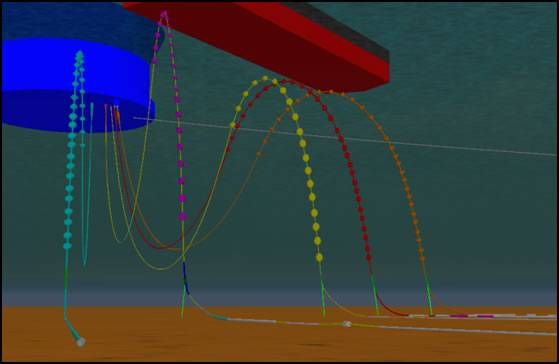


Getting to grips with test equipment is not always easy. extreme events of the system response, a longer real time simulation is required.Will Brindley, Research Engineer, Offshore Renewable Energy (ORE) Catapult In order to predict outcomes under specific scenarios e.g. The results obtained from the OrcaFlex analyses show acceptable compliance to the model test results, but the amplitude of the low frequency motion seems to be slightly under predicted. Hence time series results from the OrcaFlex analyses were directly comparable with the FSU model test time series.The drawback of this approach ultimately proved to be the CPU-cost and the duration of the numerical simulation of relatively short model test time series (scaled to real time). In addition, time series of the wave elevation and wind velocities recorded during the FSU model tests were acquired through Sevan and Marintek, enabling these environmental conditions to be integrated in the OrcaFlex analyses. Model tests have been previously performed on the moored FSU, and results from these tests were used as the basis for comparison to the OrcaFlex results. OrcaFlex is a fully 3D non-linear time domain finite element program, which supports Newman?s approximation and a method based on Aranha?s approximation in order to predict the low frequency motion of moored structures. The results obtained from the diffraction analysis were imported to OrcaFlex, where the mooring systems were also modeled. This was used to conduct a diffraction analysis on FSU. The analyses were initiated by the establishment of a finite element model of the Sevan hull. In addition, coupled time domain analyses of a moored Sevan FSU (Floating Storage Unit) were performed. This thesis comprises a theoretical part, where key subjects related to the prediction of moored structure motion are addressed. This is recognized by the dynamics of the floater, mooring lines and risers being solved simultaneously. The recommended method to analyze the dynamics of a moored structure, especially in deep waters, is by a coupled analysis approach. Accurate prediction of the system response is vital in the context of design verification of the complete system. Viscous damping, inertial mass, current loading and restoring effects from riser and mooring systems need to be adequately modeled in order to predict the system motion of response.

In deeper water, the effects on the floater motion from the mooring and riser systems increase significantly. Offshore activity related to the search of energy in terms of hydrocarbons is taking place at increasing water depths.


 0 kommentar(er)
0 kommentar(er)
